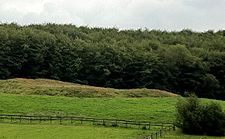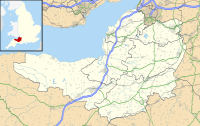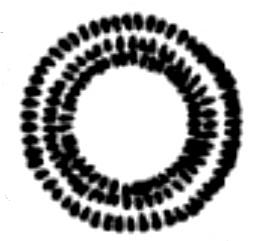Hales Castle facts for kids
Quick facts for kids Hales Castle |
|
|---|---|
| Somerset, England | |

Earthworks of Hales Castle
|
|
| Coordinates | 51°11′50″N 2°17′28″W / 51.1971°N 2.291°W |
| Type | Motte and bailey |
| Site information | |
| Condition | Only earthworks remain |
Hales Castle was an old castle from the Middle Ages (a long time ago!) that used to stand near the town of Frome in Somerset, England. Today, only its earthworks (the bumps and ditches in the ground) remain. It's protected as an ancient monument, which means it's an important historical site.
Discovering Hales Castle's Past
Hales Castle was likely built soon after the Norman conquest of England in 1066. This was when William the Conqueror and his Norman army took control of England. The castle was placed overlooking the town of Frome in the Mendip area of Somerset.
Why Was Hales Castle Built?
Castles like Hales Castle were important for the Normans. They helped them keep control over the local towns and people. This castle was also built near the River Frome and an old Roman road. These were like ancient highways, important for moving people and goods.
What Did Hales Castle Look Like?
Hales Castle was a type of castle called a "ringwork." Imagine a big circle of earth banks and ditches! This circular area was about 120 feet (37 meters) across. It stood on the northern side of Roddenbury Hill. Close by, there was also an even older Iron Age hillfort called Roddenbury Hillfort.
The castle had banks and outer ditches. It also had a "bailey," which is an outer courtyard, but it was never fully finished. The whole castle area covered about 0.11 hectares (a bit bigger than a soccer field's penalty area). The earth banks were between 0.3 meters (about 1 foot) and 1.2 meters (about 4 feet) high. There might have been a drawbridge at the entrance, which could be pulled up to stop enemies from getting in.



